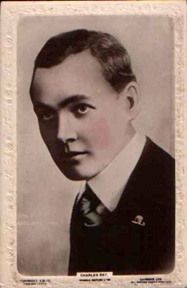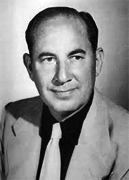Here are 10 things you should know about Margaret Livingston, born 126 years ago today. After working steadily in silent pictures and early talkies, she chose married life and investing over acting.
Tag: Thomas Ince
Hollywood Shorts: Once A Baby
 Charles Ray was a popular juvenile film star for the Thomas Ince studio in the 1910s who eventually broke away to form his own production company so that he might break away from the rural youth roles in which he’d been typecast. His 1923 production, The Courtship of Myles Standish (1923, now considered a lost film), was an expensive bust, and Ray lost everything.
Charles Ray was a popular juvenile film star for the Thomas Ince studio in the 1910s who eventually broke away to form his own production company so that he might break away from the rural youth roles in which he’d been typecast. His 1923 production, The Courtship of Myles Standish (1923, now considered a lost film), was an expensive bust, and Ray lost everything.
Ince helped Ray get back on his feet by offering him some roles, but Ince’s death in 1924 forced Ray to resort to working in low-budget “Poverty Row” productions, and he had trouble finding a niche after the advent of talking pictures. In the 1930s, he settled for minor, unmemorable roles to pay the bills, and launched various other endeavors, among them the Beverly Ray Cultural School (located at 5537 Hollywood Blvd. and named after Ray’s wife), where Ray promised prospective students he would “personally analyze your talent and chart a practical program for you.”
In 1936, Ray began publishing Charles Ray’s Hollywood Digest, a compendium of Tinseltown-related “stories or story excerpts, a full page of knock knock jokes, puns, odd, random facts or trivia, recipes, small film reviews, cartoons, etc.” (The Daily Mirror). The cost of the 96-page first issue was 40 cents (a 13-month subscription could be had for $5). And that issue featured an advertisement for Hollywood Shorts, Ray’s book of short stories (it could be had for a mere $2.50).
Sadly, there was to be just one more issue of Hollywood Digest. Thereafter, Ray continued to muddle through playing only occasional small roles in pictures until his death in 1943 of an infection caused by an impacted tooth. Ray was 52 years old and all but forgotten.
But we remember him. And we’re pleased to bring, on a weekly basis, the stories from Hollywood Shorts.
 “A baby! A baby” the director demanded. “We’ve got to have a cute baby. It’ll make the picture!”
“Get a baby,” the assistant commanded of the casting office.
Mothers came and mothers went. Babies came and babies went. Tests were taken—laughing, crying, goo-gooing, and driveling. Then a choice was made.
The picture was to be spectacular—“colossal,” to use the producer’s enthusiastic expression, born of hope.
“Yes,” all employees agreed, and whispered, “The picture of the year,” to any listener.
Violent activity began. Romans hurried about the lot in togas, in armor, and in the near-nude painted a swarthy brown. Greeks carried huge spears. Fiery steeds hauled gilded chariots. Wise men stroked long, false beards, assimilating their characters after true information from the research department.
Enthusiasm reigned. The studio became an ant hill of activity.
Cameras finally began to grind. Battle scenes were shot and
|
 |
Una Merkel slept here
But what if you aren’t satisfied with driving by the homes in which Bogie and Bacall, Jimmy Stewart, and Bette Davis resided? What if you’re more interested in viewing the former residences of the likes of Ted Healy, Una Merkel, or Gummo Marx—not Groucho, Chico, Harpo, or Zeppo, but Gummo Marx?
   |
Then you need only dial up The Movieland Directory, a very impressive online resource, indeed.
The Movieland Directory is downright hard to stump, and don’t think we didn’t try. It gave us addresses for Ned Sparks, for Jack Pickford (Mary’s prodigal brother, don’t you know), for Zasu Pitts, for Billy Gilbert—it even had addresses for El Brendel, for Pete’s sake.

The site also does reverse look-ups. You can enter an address, and if someone related to the movie industry ever lived there, there’s a pretty good chance they’ll turn up.
For instance, our friend Pat used to live on Alta Vista Boulevard, between Sunset and Fountain Avenues. By looking up her block (we’ve forgotten her exact address), we learned that Billy Wayne, who appeared in more than 250 pictures between 1931 and 1958 (but apparently starred in none of them—he’s listed as “uncredited” at IMDB.com in the overwhelming majority of them), used to live just a few doors south of Pat. That’s not terribly exciting, perhaps, but what if it had been Joan Crawford or Buster Keaton or Raymond Chandler? (Considering how often the peripatetic Chandler moved, it well could have been.)
John Ince, brother to motion picture pioneer Thomas Ince and a silent-movie actor and director in his own right, who would became a full-time character actor with the advent of talkies, also lived on what would later be Pat’s block.
And Peter Ostberg, a cabinet maker who was a Universal Studios employee in 1917 (and perhaps before and after that year, who knows?), lived right next to where Pat would live, though his residence has since been replaced by a contemporary apartment building that sits beside the similar one in which Pat resided.
Now, we don’t know Peter Ostberg from Adam, but it’s intriguing to have his name and these tidbits of info turn up in a search like this. (It is to us, anyway—perhaps we’re too easily fascinated.)
You’ll find former addresses of contemporary stars listed in the database, too, and it’s fun to see what those stars have in common with the stars of years gone by.
For instance, in the 1990s, Julia Roberts lived in the Colonial House Apartments at 1416 Havenhurst Drive. And so, at some point in their lives, did Fred Allen, Joan Blondell, Eddie Cantor, Marion Davies, Bette Davis, F. Scott Fitzgerald, Clark Gable, Myrna Loy, William Powell, and Norma Talmadge, not to mention a slew of more contemporary stars.
We managed to stump the Movieland Directory database only twice. It returned no addresses when we submitted the name of author Ursula Parrott, a once bestselling author of scandalous fiction that might be considered an arguably more sensational precursor to today’s chick lit—but then, though many of her novels were made into movies, we’re not sure Parrott ever resided in L.A., which would take the site off the hook. And the Movieland Directory has no info on Ed Wood, Jr., everyone’s favorite famously inept movie director, which came as something of a surprise to us.
But that’s nitpicking. Give the site a try, and you’ll no doubt find 95% or more of the names you’re looking for. And you might learn just a little bit of Hollywood history
